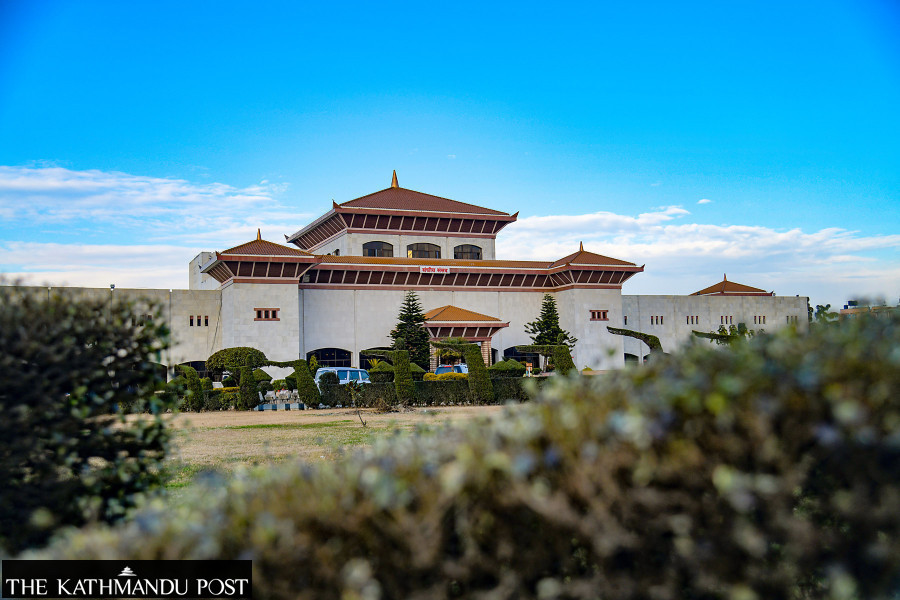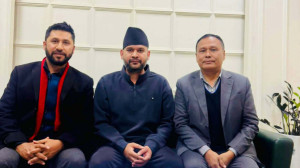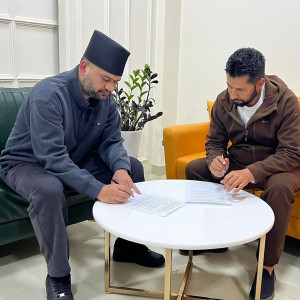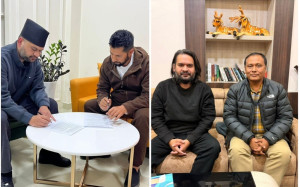Politics
Women’s share in House likely to shrink
With few women FPTP candidates, more of them may need to be elected to the upper house to meet the requirement.
Binod Ghimire
Cross-party women politicians have long been lobbying with their leaders to increase the number of female candidates in the first-past-the-post (FPTP) elections. Their efforts to secure one-third women candidates in direct election, however, couldn’t materialise as the parties prioritised male candidates.
The CPN-UML, which has fielded 141 candidates for the House of Representatives seats, spared only 11 tickets for women. The Nepali Congress is way behind, with just five among 91 candidates being women. The CPN (Maoist Centre), which has been a vocal supporter of inclusion, has nine women among its 47 candidates. The CPN (Unified Socialist) and the Rastriya Janamorcha have a woman candidate each.
The reluctance of the parties to field an adequate number of female candidates might create a situation where women’s representation in the House could be short of the 33 percent constitutional requirement. Article 84 of the Constitution of Nepal says at least one third of the members elected from each political party to the federal parliament should be women.
For the federal parliament to have one third women members, 92 of the 275 members in the House must be women, as there are only 19—or 32.2 percent—women in the currently standing 59-strong upper house.
In the lower house, 165 members are directly elected while 110 get in through the proportional representation system. The deficit of 33 percent under the first-past-the-post in the 2017 election was removed through proportional representation. Luckily, most parties winning a higher number of seats in the FPTP managed to get adequate proportional representation votes. Therefore, the gap of women representation in the FPTP could be filled through the proportional seats.
However, that might not be the case in the upcoming elections, according to the officials at the Election Commission. For instance, the CPN (Unified Socialist) has fielded 19 candidates under the FPTP, with just one woman. Being an alliance partner, many election observers have estimated that the party may win around a dozen seats with support from the Congress and the Maoist Centre. However, the votes of the alliance partners will only be limited to the FPTP category, and not the proportional system.
Recent local election results suggest the party has a popular vote share of slightly above three percent. It will get around three seats under proportional representation if it retains the ratio of votes it got in the local polls.
For instance, a party winning 15 seats altogether must have five women in them. However, even if the only woman candidate from Unified Socialist in FPTP wins and all three who would possibly win under proportional representation are women, the party would still be one woman short of their 33 percent inclusion.
This could also happen with other fringe parties, including the regional forces. “We had therefore requested the parties to field at least 33 percent women candidates. However, that couldn’t happen. Higher number of candidates means higher possibility of women being elected,” Dinesh Thapaliya, the chief election commissioner, told the Post. “We are for changing election laws to make it mandatory to field 33 percent women under the FPTP.”
Thapaliya said the parties that cannot ensure 33 percent women in the lower house will have to field only women candidates in the National Assembly polls afterward to make up for the shortfall. “They cannot field male candidates until the 33 percent women participation is ensured from their part,” he said.




 5.77°C Kathmandu
5.77°C Kathmandu















